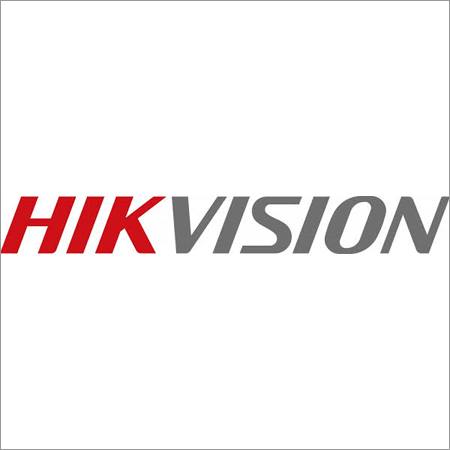Hikvision ColorVu 3.0 vs Standard IR Cameras
Surveillance cameras come in many shapes and sizes. For example, the turret (or “eyeball”) design is increasingly favored by professionals due to its wide-angle view and minimal glare. These cameras can use either traditional infrared (IR) or Hikvision’s ColorVu 3.0 technology for night vision. But how do these two imaging methods compare? Simply put, ColorVu keeps footage in full color even after dark, whereas IR-only cameras switch to black-and-white. We’ll explain these differences and show how our Hikvision 8MP 4K ColorVu turret camera leverages these advancements for superior surveillance.
How ColorVu Cameras Work
ColorVu cameras use large F1.0 aperture lenses and advanced sensors to gather as much light as possible. In addition, they include built-in white LED illumination to softly light the scene without overwhelming it. This combination — wide lens and supplemental lighting — lets ColorVu cameras capture full-color, vivid images even in near-total darkness. By comparison, a standard IR camera relies solely on infrared LEDs for night vision. In that case the scene is illuminated only in IR, so the camera records black-and-white imagery at night, losing all color detail. In practice, this means ColorVu cameras can reveal details like clothing color or vehicle paint after dusk, whereas IR cameras cannot.
|
Feature |
Hikvision ColorVu 3.0 Camera (DS-2CD2387G3-LIS2UY) |
Standard IR Camera |
|
Night illumination |
Hybrid lights (white LED + IR) enable full-color images at night |
Only infrared (IR) LEDs; scene is lit in IR spectrum (no visible light) |
|
Night vision color |
Captures full-color footage in darkness (colors like clothing or vehicles are visible) |
Only grayscale footage at night; no true color |
|
Aperture |
Very large (F1.0) lens for higher light intake |
Smaller aperture (e.g., F1.6) typical of IR models |
|
Visible output |
Emits a low-level white light (may slightly illuminate scene) |
No visible output (infrared is invisible to humans) |
|
Typical use case |
Ideal when identifying color details matters (license plates, clothing) |
Ideal when stealth or maximum night range is needed |
In practice, the choice comes down to priorities. If you need color evidence (e.g., identifying a car by its color), ColorVu 3.0 is invaluable. If stealthy night monitoring is more important, an IR camera may suffice.
Advantages of Hikvision ColorVu 3.0 Cameras
-
Full-Color Night Imagery:
Captures color footage 24/7, so clothing or vehicle colors remain visible even in darkness . -
High Light Sensitivity:
Furthermore, the large F1.0 aperture lens absorbs more light, improving image clarity in dim conditions. -
Deterrent Lighting:
Additionally, built-in white LEDs gently illuminate the scene. This not only enables color capture but also can deter intruders by making the camera visible. -
Enhanced Analytics:
Moreover, having full-color data can improve intelligent features (for example, Hikvision’s AcuSense AI accurately focuses on people/vehicles with richer context).
Disadvantages of ColorVu Cameras
-
Visible Lighting:
For example, the white LED illumination is visible to human eyes, which may alert subjects (less covert than IR). -
Limited White-Light Range:
Also, the white light typically covers about 30 m, which is generally shorter than or comparable to IR illumination range on similar cameras. -
Power Consumption:
Additionally, operating bright white LEDs can draw more power than IR-only cameras.
-
Cost:
Finally, ColorVu cameras are often more advanced and may cost more than basic IR models.
Advantages of Standard IR Cameras
-
Invisible Lighting:
IR LEDs are invisible, keeping night surveillance covert. -
Potential Longer Range:
In many designs, IR lamps can illuminate further without emitting visible light. -
Lower Cost:
IR cameras are generally simpler and can be more budget-friendly.
Disadvantages of Standard IR Cameras
-
No Color in Dark:
For example, with IR cameras the footage is purely black-and-white at night, so all color detail is lost. -
Reduced Identifiability:
Consequently, it can be harder to distinguish suspects or evidence (color cues are missing). -
Potentially Lower Clarity:
Without ColorVu’s wide aperture or supplemental light, very low-light images may appear grainier or less detailed.
Features of the Hikvision DS-2CD2387G3-LIS2UY/SL Turret Camera
To put this in context, the Hikvision DS-2CD2387G3-LIS2UY/SL is an advanced 8MP (4K) turret camera that exemplifies these technologies. Key highlights include:
- 8MP 4K Resolution: Captures crisp, detailed images for wide-area coverage.
- ColorVu 3.0 Technology: Provides full-color 24/7 imaging (wide F1.0 lens + white LED light).
- AcuSense AI Analytics: Intelligent on-board detection focuses on people and vehicles, reducing false alarms.
- Audio Capabilities: Built-in dual microphones and two-way audio allow live audio monitoring and communication on-site.
- Smart Hybrid Illumination: Integrates both IR and white lighting (3 modes) for flexible night vision.
- Active Deterrent: Features a built-in strobe light and siren that can be triggered to ward off intruders.
- Rugged Outdoor Build: Corrosion-resistant (NEMA4X) casing with IP67 weatherproofing ensures durability in all conditions.
In short, ColorVu technology revolutionizes low-light surveillance. If identifying color details at night matters, a ColorVu 3.0 camera like this Hikvision turret is the better choice: it delivers rich 4K color imagery around the clock and pairs it with smart detection and tough, weatherproof hardware. On the other hand, a standard IR-only camera may still be chosen for purely covert night monitoring. By understanding these trade-offs and advantages, you can select the ideal camera for your security needs.











